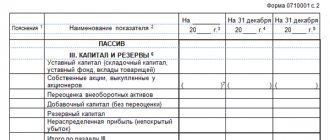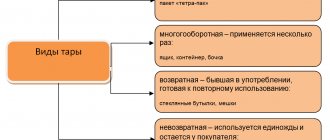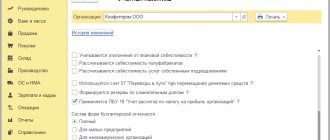Home — Articles
Most manufacturing and trading organizations provide customers with a guarantee on the goods they sell. Accounting for warranty repair costs for income tax purposes does not pose any problems. They can be taken into account as other expenses associated with production and sales (Subclause 9, clause 1, Article 264 of the Tax Code of the Russian Federation). As for VAT, warranty repairs and maintenance provided during the warranty period of operation of goods without charging an additional fee are not subject to VAT (Subclause 13, clause 2, Article 149 of the Tax Code of the Russian Federation). But the application of VAT exemption is associated with difficulties and disputes with tax authorities. Therefore, let’s take a closer look at who can use it and how.
The procedure for assessing VAT on repair services
Using the example of warranty repairs of vehicles, we will consider VAT taxation when carrying out work (rendering services). Taxation of VAT depends on the types of operations performed by the workshops. Enterprises that provide transport repair services and apply the generally established taxation system must pay VAT on all types of repairs, with the exception of warranty ones. When carrying out warranty repairs, there is no sale or object of VAT taxation.
Enterprises that provide repair services to the population have the right to apply UTII in some cases. Services for warranty repairs and maintenance of vehicles of individuals do not belong to the types of activities transferred to imputed income (paragraph 9 of Article 346.27 of the Tax Code of the Russian Federation). For these types of activities, the simplified tax system or OSNO is applied. The cost of warranty repairs for physical persons is also not subject to VAT.
Warranty repair and maintenance services: how to avoid paying VAT
15.10.2009
Estimated reading time: 10 min.
Sergey Savseris 520
Among modern methods of bringing a product to the final buyer, a model in which a subject specializing in sales does not participate is an exception. Sellers often stimulate sales of the goods they sell by providing additional preferences to buyers. One of them is an increase in the warranty period established by the manufacturer.
This article discusses the possibility of exempting from VAT the sale of warranty repair and maintenance services within the period established by the seller of the goods beyond the warranty period established by the manufacturer.
The duration of the warranty period is a condition for exemption from VAT (level 1)
Within the meaning of sub. 13 clause 2 art. 149 of the Tax Code of the Russian Federation, in order to apply exemption from VAT in connection with the provision of warranty repair and maintenance services (hereinafter referred to as warranty repair services), the following conditions must be met:
— the service provided must consist of repairs and maintenance;
— the specified repairs and maintenance must be carried out during the warranty period of the goods;
— this service must be provided without charging additional fees to the buyer of the goods.
These conditions are perceived in the same way in arbitration practice (see resolution of the FAS Moscow District dated December 10, 2007 No. KA-A40/12621-07).
The concept of a warranty period in industry legislation (level 1)
In the Tax Code of the Russian Federation, the concept of “guarantee period” is not specifically defined for use in tax relations. Therefore, for tax purposes, it must be used in the meaning in which it is used in industry legislation (Clause 1, Article 11 of the Tax Code of the Russian Federation).
The relevant regulatory legal acts that can be relied upon when choosing the meaning of the concept “warranty period” applicable to tax legal relations include the Civil Code of the Russian Federation and the Law of the Russian Federation of 02/07/1992 No. 2300-1 “On the Protection of Consumer Rights” (hereinafter referred to as the Law on the protection of consumer rights).
From the literal content of the provisions of the Law on the Protection of Consumer Rights it follows that the warranty period can be established by the manufacturer (clause 6 of article 5) and by the seller - only if it is not established by the manufacturer (clause 7 of article 5). At the same time, this law provides for the possibility of the seller assuming obligations in relation to defects in goods discovered after the expiration of the warranty period established by the manufacturer, however, such an obligation is not included in the scope of the concept of “warranty period” and is designated as an “additional obligation of the seller.”
From the point of view of the Law on the Protection of Consumer Rights, differences in the legal regime of the warranty period and additional obligation are due to different regulation of relations between the parties. When establishing a warranty period, the consumer's requirements must be satisfied in accordance with the provisions of the Law on the Protection of Consumer Rights, and when assuming an additional obligation, its content, validity period and procedure for the consumer to exercise rights under it are determined by the agreement between the consumer and the seller (paragraph 2, paragraph. 7).
Civil legislation under the warranty period means the period of time established in the purchase and sale agreement (i.e. in the agreement between the seller and the buyer) during which the goods transferred by the seller to the buyer must comply with the legal requirements for the quality of the goods (Clause 2 of Article 470 of the Civil Code of the Russian Federation ). The concept of “additional obligation” is not provided for in the Civil Code of the Russian Federation at all.
Thus, in civil law the term “warranty period” can be applied to various subjects of regulation. We can distinguish the “warranty period” in a narrow sense (as defined by the Law on the Protection of Consumer Rights) and in a broad sense (as defined by the Civil Code of the Russian Federation).
What term “guarantee period” should be used in tax legal relations? (level 1)
In order to understand what meaning should be attached to the term “guarantee period” when considering tax relations, it is necessary to correctly determine the rules that should govern those civil legal relations for which sub. 13 clause 2 art. 149 of the Tax Code of the Russian Federation provides for exemption from VAT.
The Consumer Rights Protection Law regulates relations in which one party is always the consumer, and the other can be the manufacturer, performer and seller. In other words, this law regulates relations arising from such types of purchase and sale contracts, one party to which is always a citizen who purchases or uses goods (work, services) exclusively for personal, family, household and other needs not related to the implementation of business activities.
The norms of Chapter 30 of the Civil Code of the Russian Federation, which establish one of the above definitions of the “warranty period,” regulate relations arising from the sales contract. Moreover, Art. 470 of the Civil Code of the Russian Federation, containing this definition, is included in a paragraph that includes provisions common to all types of sales contracts (in particular, both for delivery and for retail sales).
From the point of view of tax legislation, it does not matter under what civil law agreement the goods were sold - under a supply or retail purchase and sale agreement. In any case, sales of goods are subject to VAT in the same manner. This is consistent with the general principles of taxation - taxes have an economic basis and cannot be discriminatory. If we assume that exemption from VAT for warranty repair services applies only during the warranty period in the narrow sense (i.e., only during the period established by the manufacturer of the goods), then such an approach will mean the presence of discrimination and a violation of the economic principle when establishing taxes.
Indeed, under equivalent conditions, different taxation may be allowed depending on whether the buyer is a citizen (consumer) or a commercial organization (i.e., discrimination occurs). In addition, different taxation procedures are possible in relation to the same economic situations - in all cases, warranty repairs are carried out without charging the buyer. However, in one case (when using the term “warranty repair” in a narrow sense) VAT is assessed, and in the other (when using the term “warranty repair” in a broad sense) - not.
Therefore, for the purposes of applying sub. 13 clause 2 art. 149 of the Tax Code of the Russian Federation, the term “warranty period” should be used in the meaning in which it is used in Chapter 30 of the Civil Code of the Russian Federation (in a broad sense). In other words, warranty repair services provided to customers during the warranty period established by the seller should be exempt from VAT.
Analysis of law enforcement practice (level 1)
Ministry of Finance of Russia. The position stated above is confirmed in separate letters from financial authorities. The Ministry of Finance of Russia in letter dated 02/05/2008 No. 03-11-04/2/26 indicated that “warranty repair services for goods (vehicles) provided by an organization that has entered into agreements with both the manufacturing plant of these goods and the trading organization , are exempt from value added tax provided that these services are actually performed during the warranty period of operation of the specified goods.”
Tax authorities. The letter of the Federal Tax Service of Russia for Moscow dated May 16, 2007 No. 19-11/045476 states that the exemption or non-exemption from VAT of operations similar to those provided for in paragraph 3 of Art. 149 of the Tax Code of the Russian Federation cannot be made dependent on “who is the buyer of the relevant goods (works, services).” This argument can also be used in favor of applying VAT exemption for warranty repair services within the warranty period established by the seller and not the manufacturer.
Arbitration court. In addition, there is a position of the Federal Arbitration Court of the Moscow District, according to which the provisions of the Law on the Protection of Consumer Rights do not exclude the possibility of establishing a warranty period by any third party (not the manufacturer or the seller selling the product to the final buyer). Thus, in the resolution dated October 30, 2003 No. KA-A40/8536-03, the said court indicated that “the consumer’s right to demand that the final seller or manufacturer of the product eliminate defects in the product (to which the Inspectorate refers, citing the provisions of the Law of the Russian Federation “On the Protection of Consumer Rights” ) does not imply a prohibition on the establishment of a warranty period by any third party." This position, firstly, confirms the possibility of establishing a warranty period in the sense given to it by the Law on the Protection of Consumer Rights, not only by the manufacturer and even not only by the seller who sells the product to the final buyer, but also by entities that play the role of a link between these participants relations, and secondly, it allows you to deviate from the literal interpretation of the provisions of the Law on the Protection of Consumer Rights when applying the term “warranty period” to tax legal relations.
Options for arguments for a tax dispute (level 1)
The previously valid instruction of the State Tax Service of Russia dated October 11, 1995 No. 39 “On the procedure for calculating and paying value added tax” (lost force due to the entry into force of Chapter 21 “Value Added Tax” of the Tax Code of the Russian Federation) (hereinafter referred to as the instructions) contained an indication of the fact that warranty repair and maintenance services for goods are performed at the expense of funds included by the manufacturer in the price of the goods (paragraph 3, clause 39 of the instructions). Then the discount on the cost of warranty repair services is explained by the fact that the manufacturer has already paid tax on it, since the costs of warranty repairs were initially taken into account in the cost of the goods sold.
After the cancellation of the instruction, the legislative regulation of the obligation arising as a result of the transfer by the seller (manufacturer) of low-quality goods did not undergo any significant changes. Consequently, since the mandatory obligation of the seller (manufacturer) to eliminate defects in the transferred goods remains (Article 475 of the Civil Code of the Russian Federation, Article 18 of the Law on the Protection of Consumer Rights), the seller economically takes into account the upcoming costs of warranty repairs in the cost of goods sold.
The application of this approach confirms the possibility of applying the exemption to the sale of warranty repair services paid by the seller, because within its framework, differences in the subject of payment for services and sources of regulation of the content of relations between the parties during the warranty period and within the framework of an additional obligation do not matter. Let's consider a variant of such protection.
Option 1. There is no taxation because the tax has already been paid (level 2)
It is reasonable to assume that the cost of the costs incurred for organizing warranty service is economically included in the difference between the price the seller purchased goods from the manufacturer and the price at which these goods are subsequently alienated to them. This difference is subject to VAT from the seller; accordingly, VAT on the sale of warranty repair services when the seller assumes an additional obligation will lead to double taxation of the same amounts, which is unacceptable.
This conclusion follows from the essence of the legal relationship under consideration, however, “blindly following” this argument in the event of a dispute may lead to the fact that the manufacturer or seller must prove that the cost of warranty repairs is actually included in the price of the product. If this assertion is not proven, then the tax authority will be able to refuse to apply the exemption only on the basis that double taxation does not arise, since the cost of warranty repairs was not included in the price of the goods.
Option 2. Receiving an invoice with VAT from a service organization (level 2)
If an organization decides that the sale of warranty repair and maintenance services within the period established by the seller is subject to VAT, it should pay attention to the following.
On the one hand, the wording of paragraph 5 of Art. 149 of the Tax Code of the Russian Federation suggests that taxpayers providing services provided for in sub. 13 clause 2 art. 149 of the Tax Code of the Russian Federation, do not have the right to refuse this benefit and, accordingly, do not have the right to charge VAT for their services. This position is confirmed in the letter of the Federal Tax Service of Russia for Moscow dated May 16, 2007 No. 19-11/045476: application of exemption from VAT on transactions for the sale of goods (work, services) provided for in clause 2 of Art. 149 of the Tax Code of the Russian Federation (including warranty repair services), is mandatory for taxpayers.
On the other hand, clause 5 of Art. 173 of the Tax Code of the Russian Federation provides that taxpayers who have the right to a benefit, but still issue an invoice to the buyer with the allocation of the tax amount, are required to pay this VAT to the budget. Thus, there is a legislative conflict regarding the tax consequences of presenting and paying VAT on an invoice for warranty repairs.
If the invoice is nevertheless issued by an organization that directly provides warranty repair services (hereinafter referred to as the service organization), and the “input” VAT is paid by the seller, then this circumstance does not deprive him of the opportunity to apply a tax deduction for such services. The basis for deducting the tax presented will be the invoice of the service organization and the acceptance of the services provided for accounting.
The proposed approach is consistent with the position of the highest court, set out in the Resolution of the Presidium of the Supreme Arbitration Court of the Russian Federation dated January 30, 2007 No. 10627/06. In this case, the Supreme Arbitration Court of the Russian Federation recognized the legality of the buyer applying a tax deduction if the seller presents an invoice with an allocated amount of VAT for non-taxable transactions (private security services). Similar conclusions are contained in the decisions of the Federal Antimonopoly Service of the Volga-Vyatka District dated December 28, 2006 No. A82-15226/2005-99, the Moscow District dated November 20, 2006, November 27, 2006 No. KA-A40/11296-06, the Northwestern District dated August 14, 2008 to case No. A56-1302/2006, dated November 24, 2006 No. A56-13319/2006.
However, in connection with the uncertainty discussed above in the provisions of Art. 149 of the Tax Code of the Russian Federation, it is possible for tax authorities to file a claim against an organization that paid for services for warranty repair of goods on invoices that included VAT, if the tax authority takes the position that the benefit provided for in subsection was subject to mandatory application. 13 clause 2 art. 149 of the Tax Code of the Russian Federation. In such a situation, the application of a VAT deduction may be refused (illegally, in their opinion, presented by service centers).
Conditions providing tax exemption
Among the equipment repairs performed, a significant place is occupied by work or services provided under warranty. The condition for providing the service is the availability of a vehicle purchase and sale agreement and a warranty card. The owner of the equipment must have a service book indicating compliance with the conditions for maintaining the vehicle.
Warranty repairs of vehicles are exempt from taxation if a number of conditions are met.
| Condition | Explanations |
| Legislative norm | Exemption from taxation of transactions during the guarantee period is established in paragraphs. 13 clause 2 art. 149 Tax Code of the Russian Federation |
| Exemption period | Services and work are carried out within the warranty period established by the manufacturer |
| Charging | The cost of warranty service is not subject to VAT, provided that there is no additional charge to the end consumer. |
| Distribution area | The exemption condition applies to the work itself or services used in the process of repair or servicing of spare parts |
| Persons eligible for release | The work is carried out by a person entitled to carry out warranty repairs (manufacturer) or authorized by the manufacturer in accordance with the contract |
On amounts paid by the owner of the vehicle in excess of the warranty or for spare parts purchased separately from the service, VAT is charged in accordance with the general procedure. To obtain VAT exemption, all conditions must be met.
When completing repair work, they use an order form, a buyer’s claim, a defective statement, a work order, a complaint report, invoices for the transfer of spare parts, and other primary documents. The parties enter into a bilateral act of acceptance of work, one copy of which is sent to the manufacturer.
Carrying out warranty repairs by dealers
Manufacturers can delegate the authority to carry out repair work to persons performing maintenance - car services, service workshops. Enterprises carry out work while incurring costs that ensure:
- Maintenance of real estate, tools and equipment used during work.
- Remuneration of employees - workers, support and management personnel.
- Utility fees collected to meet the needs of buildings.
- General taxes, contributions for employee benefits.
- Other expenses arising during the conduct of activities.
It is assumed that the cost of warranty repairs paid by the manufacturer includes the amount of the workshop costs as part of the compensation. Dealers, along with manufacturers, have the right to be exempt from VAT, subject to a number of conditions. Recommendations on the application of the legislation are presented in the letter of the Ministry of Finance of the Russian Federation dated February 28, 2013 No. 03-07-07/5908.
Warranty repair services provided at no additional charge are not subject to VAT. The right to carry out work must be confirmed by a contract and carried out during the warranty period.
Deputy Director of the Department of Tax and Customs Tariff Policy S.V. Razgulin
When receiving compensation for expenses, enterprises are entitled to tax exemption only for the cost of repairs and spare parts used in the work. If compensation arises and is used to pay off current expenses in excess of the direct costs of repairs or maintenance, the amount is the income of the enterprise (
What documents confirm the provision of warranty services?
In order to confirm the rights to VAT exemption, an organization will need the following documents:
- If the company independently carries out warranty repairs, then the supporting documents are: warranty card (purchase agreement, technical documentation), customer service book, work acceptance certificate signed by the owner of the faulty product, etc. Information that will be required to receive the benefit — confirmation that the repair was carried out during the warranty period.
- If the company independently carries out warranty repairs, then the supporting documents are: an agreement stipulating the obligation to carry out warranty repairs, invoices and certificates of work performed from service centers, as well as documentary evidence that the repair is a warranty repair (for example, copies of warranty cards).
Maintaining separate accounting for taxable and non-VAT-taxable transactions
When a company carries out several types of repairs using OSNO, it is necessary to select spare parts, the installation of which does not require payment of VAT during warranty repairs. Tax deduction amounts accrued by the supplier on the sale of spare parts are restored with simultaneous payment to the budget.
Enterprises providing services subject to and exempt from VAT are required to keep separate records of income, expenses and liabilities. To determine the need for separation of indicators, the 5 percent rule is taken into account:
- If the share of expenses for non-taxable transactions for the tax period did not exceed 5 percent of the enterprise’s total expenses, separate accounting can be avoided (clause 4 of Article 170 of the Tax Code of the Russian Federation).
- Accounting for expenses to determine the five percent threshold is carried out within the quarter - the tax period for calculating VAT.
- When incurring warranty repair costs within 5%, the company can deduct the entire amount of input VAT.
A number of manufacturers fully provide dealers with spare parts and materials. Separate accounting of parts and materials is not required when the manufacturer specifically supplies spare parts used for warranty repairs. VAT on other costs for taxable and non-taxable transactions is carried out with separate accounting.
OSNO and UTII
An organization can perform warranty repairs on the same products sold under different tax regimes. In this case, the costs of warranty repairs, which simultaneously relate to various types of activities, must be distributed (clause 9 of Article 274, clause 7 of Article 346.26 of the Tax Code of the Russian Federation). For example, you should distribute the cost of services of a service center that carried out warranty repairs of goods sold wholesale (general taxation system) and retail (UTII). For more information on how to distribute expenses related to different tax regimes, see How to take into account expenses when combining OSNO with UTII.
Accounting for warranty repairs from the seller
The obligation of the seller (manufacturer) of equipment to carry out warranty repairs is established by law. An enterprise that provides a guarantee and pays the contractor for repair costs must create reserves in accounting. The reserve is taken into account until the warranty expires.
An example of accounting for transactions at a manufacturer
Selmash LLC produces equipment with a warranty period. The amount of the reserve for 2021 amounted to 780,000 rubles. The service center's expenses for repairs under warranty amounted to 920,000 rubles, of which 320,000 rubles are compensation for work. The following entries are made in the manufacturer's accounting:
- The amount of the accrued reserve is reflected: Dt 20 Kt 96 in the amount of 780,000 rubles;
- Expenses are taken into account in the amount of the cost of installed spare parts: Dt 96 Kt 10 in the amount of 320,000 rubles;
- The costs of the service center are taken into account: Dt 96 Kt 76 in the amount of 600,000 rubles;
- The amount of costs exceeding the reserve amount is reflected: Dt 20 Kt 76 in the amount of 140,000 rubles;
In accounting, the company applies the requirements of PBU 8/2010. A reserve for repairs is created for all types of equipment for which a manufacturer has provided a warranty.
Accounting for warranty service costs
Service centers that actually carry out warranty repairs and maintenance and receive reimbursement of their expenses are not subject to the requirements of PBU 8/2010; for them, this activity is classified as normal activities. But manufacturers and sellers who establish warranty periods for their goods, works or services and reimburse performers for their expenses for warranty repairs and maintenance, in our opinion, have not the right, but the obligation to create a reserve for warranty repairs in accounting. At the same time, in accordance with the provisions of PBU 8/2010 (subclause “b” of clause 19 of PBU 8/2010), the obligation to create a reserve does not depend on whether the trading organization receives compensation for the costs of warranty repairs or not.
When creating a reserve for warranty repairs and warranty service, deductions are taken into account as part of expenses for ordinary activities or as part of other expenses (clause 5 of PBU 10/99, approved by order of the Ministry of Finance of Russia dated May 6, 1999 No. 33n, clause 8 of PBU 8/ 2010):
DEBIT 20 (23, 44, 91-2) CREDIT 96 - reserve accrued.
Note that the amount of the estimated liability is determined on the basis of existing facts of economic life, experience in relation to the fulfillment of similar obligations, and, if necessary, the opinions of experts.
If the period for fulfillment of the guarantee obligation is less than or equal to 12 months, then the reserve is accrued in the full amount of the obligation. If the period of fulfillment of the warranty obligation is more than 12 months, then the amount of the reserve is determined by the discounted value (present value).
The present value of the guarantee obligation (the amount of the reserve that can be written off as expenses for the current period) is determined by the formula:
Present value of the provision = Amount of the provision x Discount factor
In turn, the discount factor is determined as follows:
Discount factor = 1: (1 + discount rate) x N
where N is the number of years of discounting the estimated liability.
The discount rate is determined by experts, for example, depending on the projected inflation rate.
The actual expenses of the manufacturer (seller) establishing a warranty period for goods (work) are reflected in accounting as follows:
DEBIT 96 CREDIT 10, 69, 70 - actual costs for warranty repairs are written off.
If warranty repairs are performed by a service center, then the costs are accepted in the amount of the service center costs indicated in the report. The accountant of the manufacturer (seller) records:
DEBIT 96 CREDIT 76 - costs associated with reimbursement of service center expenses for warranty repairs are written off against the created reserve.
If the actual costs for warranty repairs exceed the reserve amount, the excess amount is included in the following costs:
DEBIT 20 (23, 44, 91-2) CREDIT 10 (69, 70, 76) - reflects repair costs exceeding the amount of the established reserve.
The restoration of the amount of unused reserve at the end of the year is carried out as follows:
DEBIT 96 CREDIT 91-1 - the amount of unused reserve is included in other income.
If the company takes into account the amount of the reserve at a discounted value, then the costs of increasing the size of the guarantee obligation due to an increase in the present value as the deadline for fulfilling the obligation approaches (interest) are taken into account as part of other expenses (clause 20 of PBU 8/2010).
The following entry is made in the accounting:
DEBIT 91-2 CREDIT 96 - reflects the amount of increase in present value.
Expenses to increase the warranty obligation (interest), which are written off in the following reporting periods, are considered as follows:
Expenses to increase the provision (interest) = Present value of the provision at the end of the previous reporting period x Discount rate
This procedure is provided for in paragraph 20 of PBU 8/2010. Appendix No. 2 to PBU 8/2010 provides a detailed example of calculating reserve amounts for an organization that sells goods with an obligation to provide warranty service.
Regarding the creation of a reserve for warranty repairs and maintenance in conditions where the contract with the manufacturer provides for reimbursement of expenses, it should be noted that the provisions of PBU 8/2010 (subclause “c” of clause 19 of PBU 8/2010) allow, in exceptional cases, to recognize accounting also includes the amount of claims to other persons for reimbursement of expenses that the organization will incur in fulfilling the estimated liability. This is only possible if the organization is confident that economic benefits will flow. It is noted that these requirements are recognized in accounting as an independent asset (paragraph 5, clause 19 of PBU 8/2010). As for their reflection in the reporting, in the balance sheet such an asset and an estimated liability are shown separately (the amount of the asset does not reduce the amount of the estimated liability), and in the profit and loss statement - collapsed (that is, expenses reflected when recognizing estimated liabilities are presented separately). deduction of income recognized when accounting for expected proceeds from counterclaims and claims against other persons as an asset). The asset in this case is recognized in an amount not exceeding the amount of the estimated liability.
Accounting for spare parts during warranty repairs
Service centers performing warranty repairs use spare parts from various sources. Depending on the delivery conditions, the rules for accounting for spare parts are determined. Enterprises that use only purchased spare parts for various types of repairs often determine the cost ratio by the proportion of the cost of repairs. The share of warranty repair activities in the total volume allows us to determine the amounts not taken into account in the VAT deduction.
Let's consider the execution of transactions when spare parts come from the manufacturer and are purchased by the dealer independently. The procedure for conducting accounting operations is fixed in the accounting policy of the enterprise.
| Condition | Spare parts received from the manufacturer | Spare parts purchased by the service center |
| Posting | Not produced, taken into account off balance sheet | Produced at the company's warehouse |
| Account | 003 | 10, 41 |
| Documents upon receipt of spare parts | Dealer agreement with the manufacturer, acceptance certificate | Delivery agreement, delivery note, payment documents |
| Write-off of spare parts | Consumption report, complaint report, demand invoice M-11 | M-11 when released to production and M-15 when released to third parties |
Spare parts must be accounted for in a separate sub-account opened to the account or accounted for off the balance sheet. Accounting for the balance of spare parts is possible as a transfer on a toll basis, while the recipient does not have ownership rights. Parts must not be sold at retail or used for routine repairs.
VAT restoration during reorganization
If the legal successor works under the general regime and receives during the reorganization the technical and technical services that the previously reorganized company took into account in VAT deductions, then nothing needs to be restored.
If the successor organization received technical and technical information from the reorganized company and will use these technical and technical information either in other activities that are not subject to taxation, or in other activities that are not subject to VAT, then it must necessarily restore the VAT that was declared. deductible, and VAT of the reorganized company (clause 3.1 of Article 170 of the Tax Code of the Russian Federation).
Therefore, during the reorganization, the successor must first of all figure out whether the reorganized company has claimed a deduction, as well as where the GWS will be sent, and into what activity - taxable or not subject to VAT.
According to the changes, the restoration of tax amounts by the legal successor is carried out on the basis of invoices issued to such an organization and attached to the transfer deed or separation balance sheet, based on the value of the transferred goods (work, services), property rights indicated in them, and in relation to the transferred fixed assets and intangible assets - in an amount proportional to the residual (book) value without taking into account revaluation.
Submission of any types of reports to all regulatory authorities: Federal Tax Service, Pension Fund of the Russian Federation, Social Insurance Fund, Rosstat, RAR, RPN.
To learn more
If there are no invoices, then the restoration of tax amounts is carried out by the legal successor on the basis of an accounting certificate-calculation using the tax rates in force at the time of acquisition of goods and services, property rights, fixed assets by the specified organization, to the cost of goods and services, property rights, and in relation to fixed assets and intangible assets - in an amount proportional to the residual (book) value without taking into account the revaluation specified in the transfer act or separation balance sheet.
VAT on accounting for defective spare parts received as a result of repairs
After replacing spare parts, failed defective parts must be disposed of or restored to their consumer qualities. The service center can sort parts based on an expert assessment, repair them, and then sell them. Service companies:
- They enter into an agreement with the manufacturer for the right to dispose of failed spare parts after they are replaced.
- They register spare parts as received free of charge, included in accounting as other income, and in tax accounting as non-operating income.
- The cost of the spare part for registration is determined based on the examination performed.
When selling spare parts, VAT is charged in accordance with the general procedure. Input VAT is not deductible due to its absence, with the exception of tax received from suppliers of materials used in repairs.
Errors that occur in accounting
The difficulty in accounting for repair operations under warranty by the manufacturer and contractor entails the likelihood of errors.
| Condition for keeping records | Wrong position | Correct position |
| Taxation of transactions with VAT | The company refuses the exemption granted by law | Refusal of the benefits provided by paragraph 2 of Art. 149 of the Tax Code of the Russian Federation, not allowed |
| Maintaining separate records | Separate accounting of transactions is not maintained when deductions are applied simultaneously for taxable transactions | If the five percent threshold is exceeded, in the absence of separate accounting it will not be possible to accept the corresponding amounts of VAT for deduction |
| Creating a reserve for repairs | The reserve is created by the contractor - the person with whom the manufacturer has entered into an agreement to carry out work | A reserve for the costs of future repairs and maintenance under warranty is created by the manufacturer |
Question No. 1. In what period is VAT restored on spare parts if the supplier’s tax amounts were previously legally accepted for deduction by the contractor performing warranty repairs?
Restoration of the tax and payment of previously deductible VAT are carried out during the period of transfer of spare parts from the warehouse to the installation for repairs - tax-free operations.
Question No. 2. Are there rules clearly defined by law that define the procedure for maintaining separate accounting in the presence of VAT-taxable and non-VAT-taxable transactions?
The legislation does not establish a procedure for maintaining separate accounting of income and expenses for calculating VAT. The principles of separate accounting, allowing to calculate VAT and take into account incoming amounts as deductions, must be developed by the enterprise and enshrined in the accounting policy.
simplified tax system
If an organization applies a simplified tax system and pays a single tax on income, then do not take into account the costs of warranty repairs when calculating the tax base (clause 1 of Article 346.14 of the Tax Code of the Russian Federation).
If an organization pays a single tax on the difference between income and expenses, the costs of warranty repairs reduce the tax base (subclause 25, clause 1, article 346.16 of the Tax Code of the Russian Federation). Reduce the tax base as expenses for warranty repairs arise and are paid (clause 2 of Article 346.17 of the Tax Code of the Russian Federation). For example, if an organization carries out repairs on its own, then include the cost of spare parts in the calculation as they are replaced and paid to the supplier (subclause 3, clause 1, article 346.16, clause 2, article 346.17, clause 2, article 346.16, clause 1 Article 252 of the Tax Code of the Russian Federation), and employees’ salaries - as they are paid (clause 2 of Article 346.17 of the Tax Code of the Russian Federation).
If an organization purchases spare parts (components) to carry out warranty repairs, then the amount of input VAT must be taken into account as part of expenses (subclause 8, clause 1, article 346.16 of the Tax Code of the Russian Federation). For more information about this, see How to use the simplified tax system to take into account input VAT paid to suppliers.







